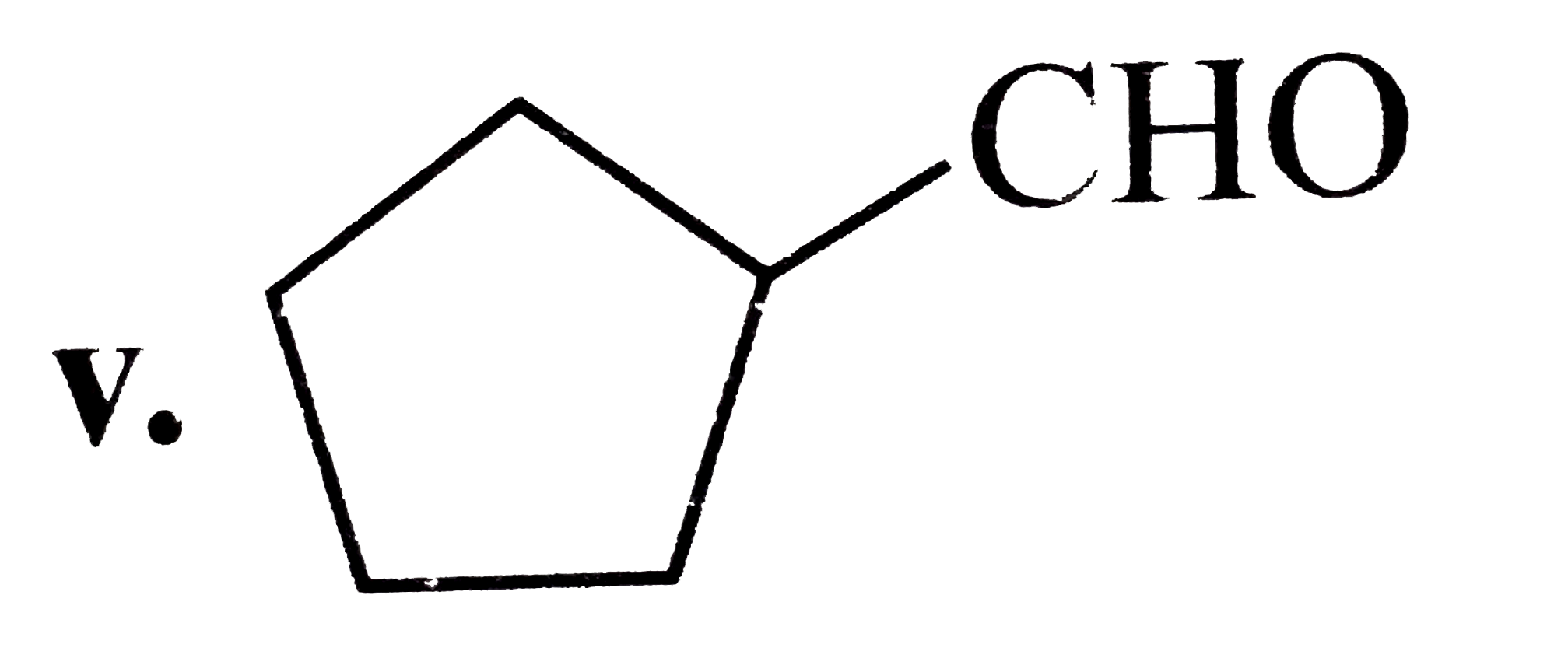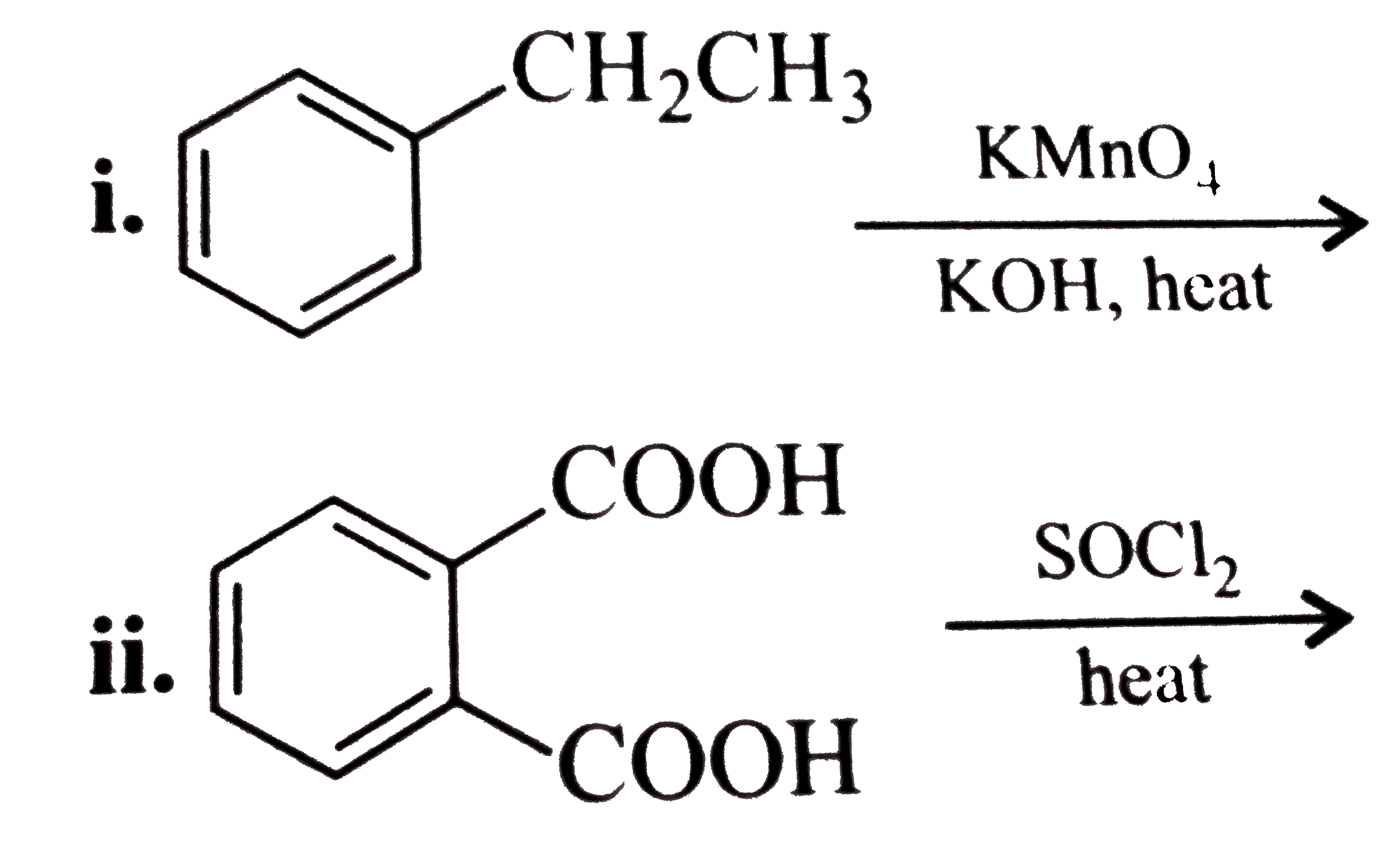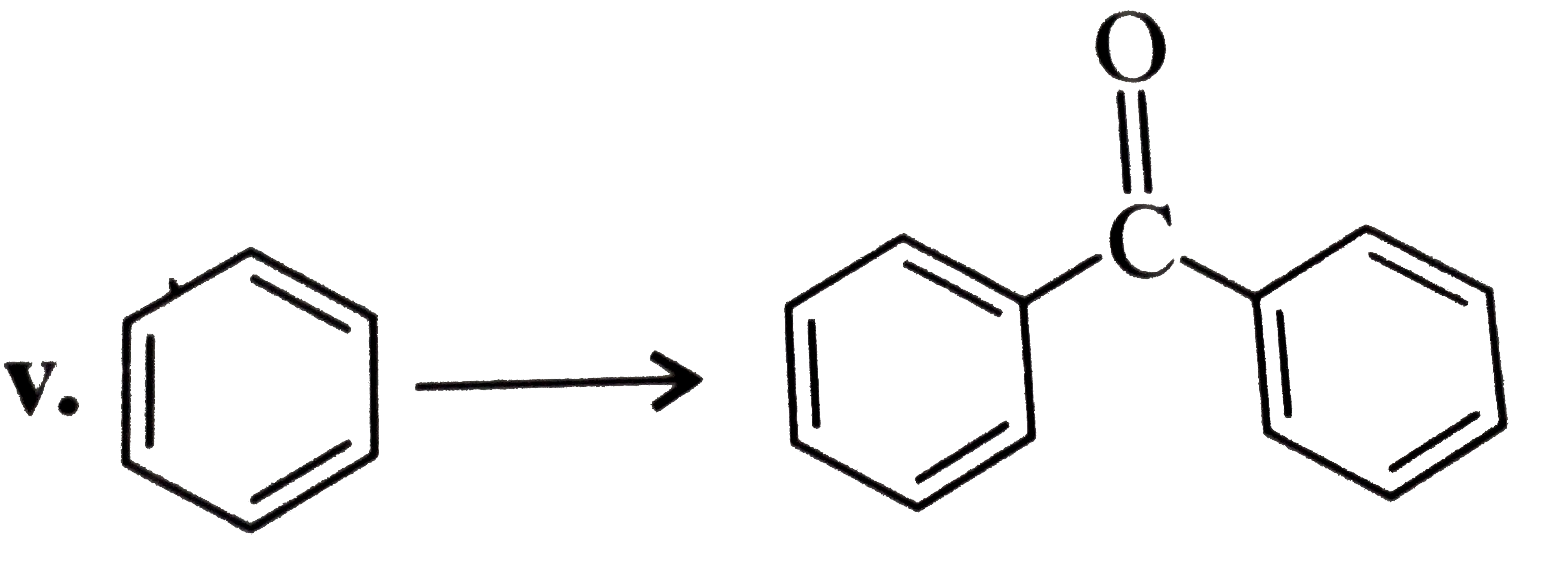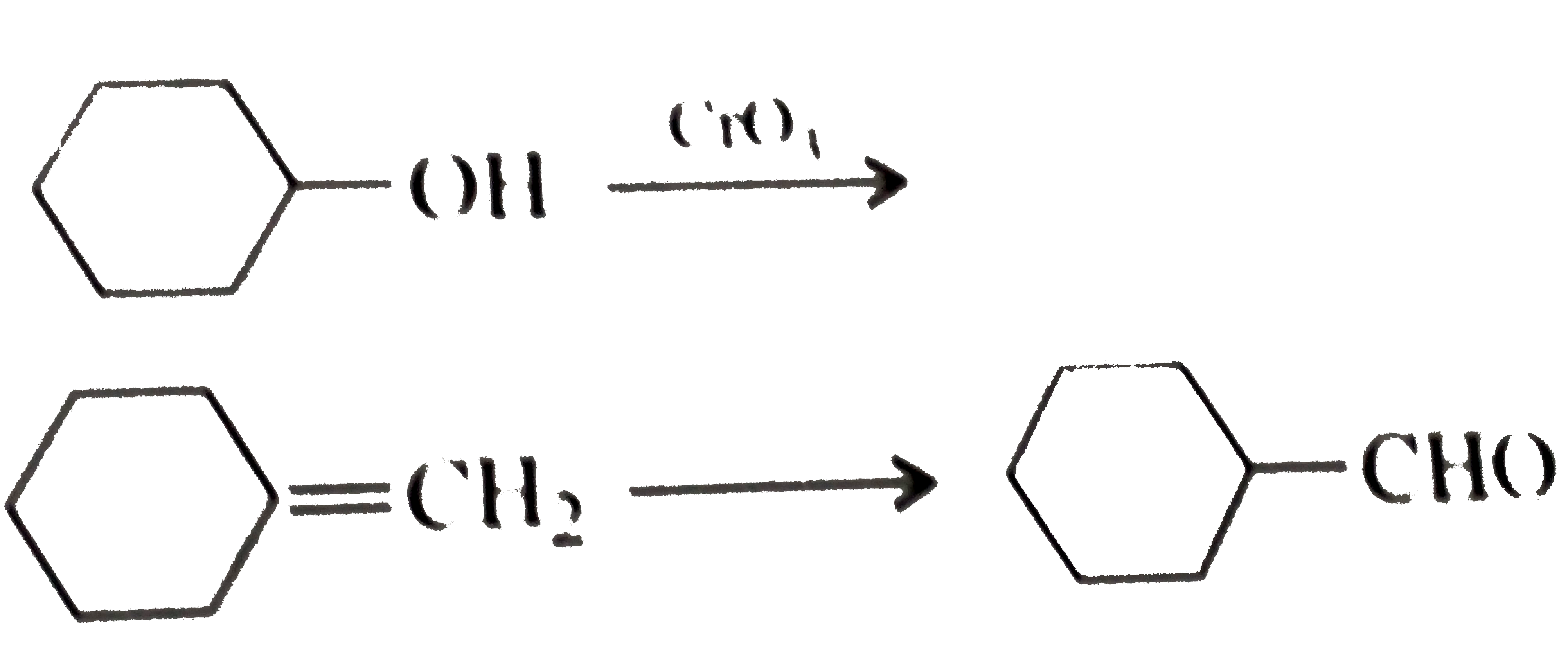Complete Solutions to Exercises Concept Application of chapter ALIPHATIC AND AROMATIC ALDEHYDES AND KETONES of Class 12 book with complete answers and questions
| Class 12 | CHEMISTRY |
| Chapter | ALIPHATIC AND AROMATIC ALDEHYDES AND KETONES |
| CENGAGE CHEMISTRY | Exercises Concept Application |
| Number Of Questions | 20 |
| Academic Year | 2023-24 |
What is meant by the following terms ? Give an example of the reaction in the case.
i. Cyanohydrin ii. Actal
iii. Semicarbazone iv. Aldol
v. Hemiacetal vi. Oxime
vii. Ketal viii. Imine
ix. 2,4-DNP derivative x. Schiff's baseView SolutionName the following compounds according to the IUPAC system of nomenclature:
i. `CH_(3)CH(CH_(3))CH_(2)CH_(2)CHO`
ii. `CH_(3)CH_(2)COCH(C_(2)H_(5))CH_(2)CH_(2)Cl`
iii. `CH_(3)CH=CHCHO`
iv. `CH_(3)COCH_(2)COCH_(3)`
v. `CH_(3)CH(CH_(3))CH_(2)C(CH_(3))_(2)COCH_(3)`
vi. `(CH_(3))_(3)C CH_(2)COOH`
vii. `OHC C_(6)H_(4)CHO-p`07:29View SolutionDraw the structures of following compound:
i. 3-Methylbutanal
ii. p-Nitropropiopehnone
iii. P-Methylbenzaldehyde
iv. 4-Methylpent-3-en-2-one
v. 4-Chloropentan-2-one
vi. 3-Bromo-4-phenylpentanoic acid
vii. p-p'-Dihydroxybenzophenone
viii. Hex-2-en-4-ynoic acid05:34View SolutionWrite the IUPAC names of following ketones and aldehydes. Wherever possible, give common nemes also.
i. `CH_(3)CO(CH_(2))_(4)CH_(3)`
ii. `CH_(3)CH_(2)CHBrCH_(2)CH(CH_(3))CHO`
iii. `CH_(3)(CH_(2))_(5)CHO`
iv. `Ph-CH=CH-CHO`
v.
vi. `PhCOPh`06:03View SolutionDraw the structure of following derivatives:
i. 2,4-Dinitrophylhydrazone of benzaldehyde.
ii. Cyclopropanone oxime
iii. Actaldehyde dimethyl acetal
iv. Semicarbazone of cyclobutanone
v. Ethylene ketal of hexan-3-one
vi. Methyl hemiacetal of formaldehyde05:33View SolutionPredict the products formed when cyclohexane carbaldehyde reacts with the following reagents:
i. PhMgBr and then `H_(3)O^(+)`
ii. Tollens reagent
iii. Semicarbazine and weak acid
iv. Excess ethanol and acid
v. Zinc amalgam and dilute hydrochloric acid05:21View SolutionWhich of the following compounds would undergo aldol condensation or the Cannizzaro reaction, or neither? Writer the structures of expected products of aldol condensation and Cannizzaro reaction.
i. Methanal ii. 2-Methylpentanal
iii. Benzaldehyde iv. Benzophenone
v. Cyclohexanone vi. 1-Phenylpropanone
vii. Phenylacetaldehye viii. Butan-1-ol
ix. 2,2-Dimethylbutanal12:57View SolutionHow will you convert ethnal into the following compounds ?
i. Butane-1,3-idol , ii. But-2-enal
iii. But-2-enoic acid03:13View SolutionWrite structure formulae and names of four possible aldol condensation products form propanal and butanal. In each case. Indicate which aldehyde acts as nucleophile and which as electrophile.
07:30View SolutionAn organic compound with the molecular folmula `C_(9)H_(10)O` form 2,4-DNP derivative, reduces Tollens reagent, and undergoes Cannizaro reaction. On vigorous oxidation, it gives 1,2-benzenedicarboxylic acid. Identify the compound.
06:23View SolutionAn organic compound (A) (molecular formula `C_(8)H_(16)O_(2))` was hydrolysed with dilute sulphuric acid to give a carboxylic acid (B) and an alcohol (C ). Oxidation of (C ) with chromic acid produced (B). (C ) on dehydration gives but-1-ene. Write equations for the reactions involved.
05:30View SolutionArrange the following compounds in the increasing order of their property as indicated:
i. Acetaldehyde, acetone, di-tert-butyl ketone, methyl tert-butyl ketone (reactivity towards HCN).
ii. `CH_(3)CH_(2)CH(Br)COOH, CH_(3)CH(Br)CH_(2)COOH, (CH_(3))_(2)CHCOOH, CH_(3)CH_(2)CH_(2)COOH` (acidic strength).
iii. Benzoic acid, 4-nitrobenzoic acid, 3,4-dinitro-benzoic acid, 4-methoxybenzoic acid (acidic strength).10:20View SolutionGive simple chemical test to distinguish between the following pairs of compounds.
i. Propanal and Propanone
ii. Acetophenone and Benzophenone
iii. Phenol and Benzioc acid
iv. Benzoic acid and Ethyl benzoate
v. Pentan-2-one and Pentan-3-one
vi. Benzaldehyde and Acetophenone
vii. Ethanal and Propanal07:06View SolutionHow will you prapare the following compounds from benzene ? You may use any inorganic reagent and any organic one having not more than one carbon atom.
i. Methyl benzonate ii. m-Nitrobenzonic acid
iii. p-Nitrobenzoic acid iv. Phenylacetic acid
v. p-Nitrobenzaldehyde09:27View SolutionHow will you bring about the following conversions in not more than two steps ?
i. Propanone to propene
ii. Benzoic acid to Benzaldehyde
iii. Ethanol to 3-Hydroxybutanal
iv. Benzene to m-Nitroacetopenone
v. Benzaldehyde to Benzophenone
vi. Bromobenzene to 1-Phenylethonal
vii. benzaldehyde to 3-Phenylpropan-1-ol
viii. Benzaldehyde to `alpha`-Hydrophylacetic acid
ix. Benzoic acid to m-Nitrobenzyl alcohol12:39View SolutionDescribe the following
i. Acetylation
ii. Cannizzaro reaction
iii. Cross aldol condensation
iv. Decarboxylation08:27View SolutionComplete each synthesis by giving the missing starting material, reagent, or products.
i.
ii.
iii. `C_(6)H_(5)CHO overset(H_(2)NCONHNH_(2))rarr`
iv.
v.
vi.
vii. `C_(6)H_(5)CHO+CH_(3)CH_(2)CHO overset(Dil.NaOH)rarr`
viii. `CH_(3)COCH_(2)COOC_(2)H_(5)overset((i)NaBH_(4))underset((ii)H^(+))rarr`
ix.
x.
xi. View Solution
View SolutionGiving plausible explanation for each of the following:
i. Cyclohexanone forms cyanohydrin good yield but 2,2,6-trimethylcyclohexanone does not.
ii. There are two `(-NH_(2))` groups in semicarbazide. However, only one is involved in the formation of semicarbazones.
iii. During the preparation of esters from a carboxylic acid and an alcohol in the ester should be removed as soon as it is formed.04:10View SolutionAn organic compound contains `69.77%` carbon, `11.63%` hydrogen, and rest oxygen. The molecular mass of the compound is 86. It does not reduce Tollens reagent but forms an aditional compound with sodium hydrogensulphite and gives positive iodoform test. On vigorous oxidation, it gives ethanoic and propanoic acid. Write the possible structure of the compound.
06:04View SolutionAlthough phenoxide ion has more number of resonating structures than carboxylate ion, carboxylic acid is a stronger than phenol. Why ?
01:26View Solution
Exercises Concept Application questions and complete solutions for chapter ALIPHATIC AND AROMATIC ALDEHYDES AND KETONES of CENGAGE CHEMISTRY (HINGLISH) of Class 12
All Exercises from CENGAGE CHEMISTRY Class 12 CHEMISTRY ALIPHATIC AND AROMATIC ALDEHYDES AND KETONES
- Archives Fill In Theblanks
- Archives Linked Comprehension
- Archives Multiple Correct
- Archives Objective
- Archives Subjective
- Archives True And False
- Exercises Assertion-Reasoning
- Exercises Concept Application
- Exercises Linked Comprehension
- Exercises Multiple Correct
- Exercises Single Correct
- Exercises Subjective
- Illustration
- Solved Examples
